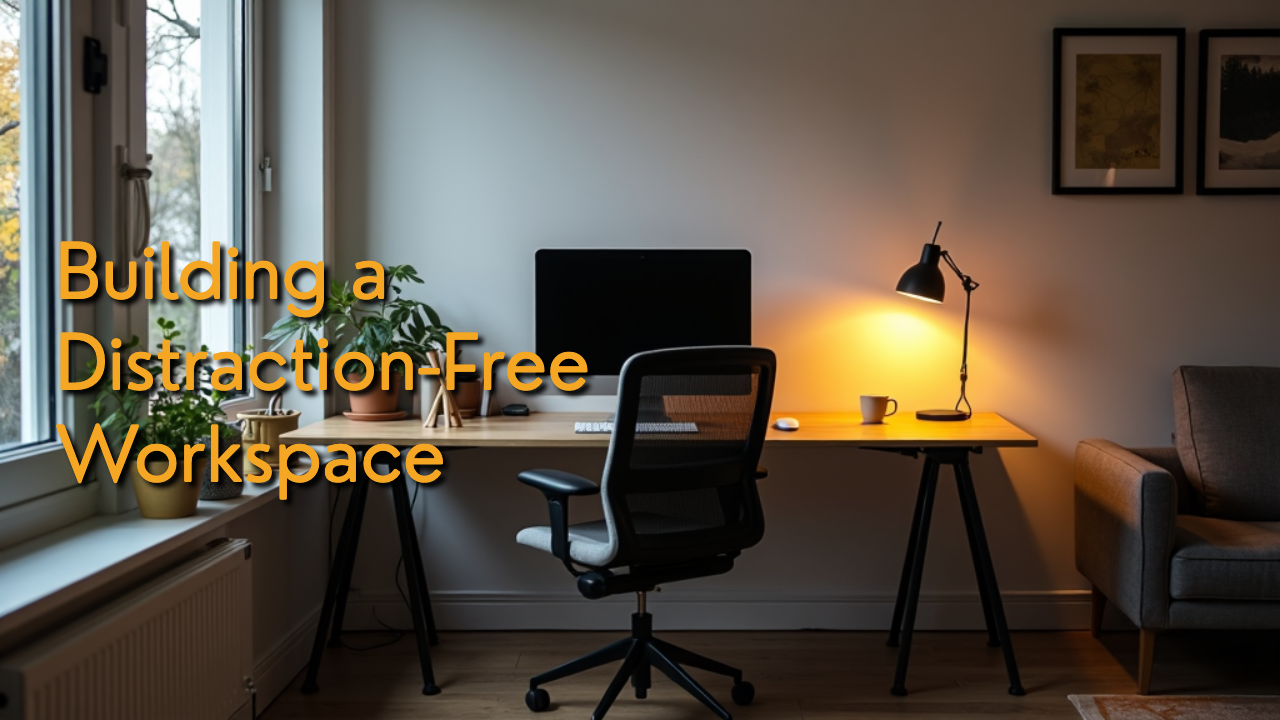
Your workspace is more than just a place to work—it's a powerful tool that can either enhance or hinder your productivity. In today's hyper-connected world, creating a distraction-free environment is crucial for maintaining focus and achieving deep work. Let's explore how to design and optimize your workspace for maximum productivity.
1. The Foundation: Choosing Your Space
The first step in creating a distraction-free workspace is selecting the right location. Whether you're working from home or in an office, consider these key factors:
- Natural light exposure and window placement
- Ambient noise levels and acoustic considerations
- Traffic patterns and potential interruptions
- Available space for essential equipment and movement
2. Essential Elements of a Focused Environment
Your workspace should incorporate these fundamental elements:
-
Proper Lighting:
- Position your desk to maximize natural light
- Use adjustable task lighting for evening work
- Consider circadian-friendly lighting solutions
-
Ergonomic Setup:
- Invest in a quality chair with proper support
- Position your monitor at eye level
- Use an ergonomic keyboard and mouse
-
Sound Management:
- Consider sound-absorbing materials
- Use noise-canceling headphones when needed
- Create a white noise buffer if necessary
3. Digital Environment Optimization
Your physical workspace is only half the equation. Optimize your digital environment with these strategies:
- Use Deep Work Zone to block distracting websites
- Implement a clean desktop policy
- Organize files and applications systematically
- Set up automated backup systems
"Your environment will eat your goals and habits for breakfast. Design your environment to remove friction for habits you want to build and add friction for habits you want to avoid." - James Clear
4. Minimizing Visual Distractions
Visual clutter can be just as distracting as digital notifications. Here's how to maintain a visually calm workspace:
- Implement a clean desk policy
- Use cable management solutions
- Create designated storage spaces
- Maintain neutral, calming colors
5. Creating Transition Rituals
Establish clear boundaries between work and personal time with these transition rituals:
- Morning setup routine
- End-of-day cleanup process
- Physical separation of work and relaxation spaces
- Time-based environmental adjustments
Conclusion
Creating a distraction-free workspace is an ongoing process of refinement and adaptation. Start with these foundational elements and continuously adjust based on your experiences and needs. Remember, the goal is to create an environment that supports your focus and productivity while reflecting your personal work style.
